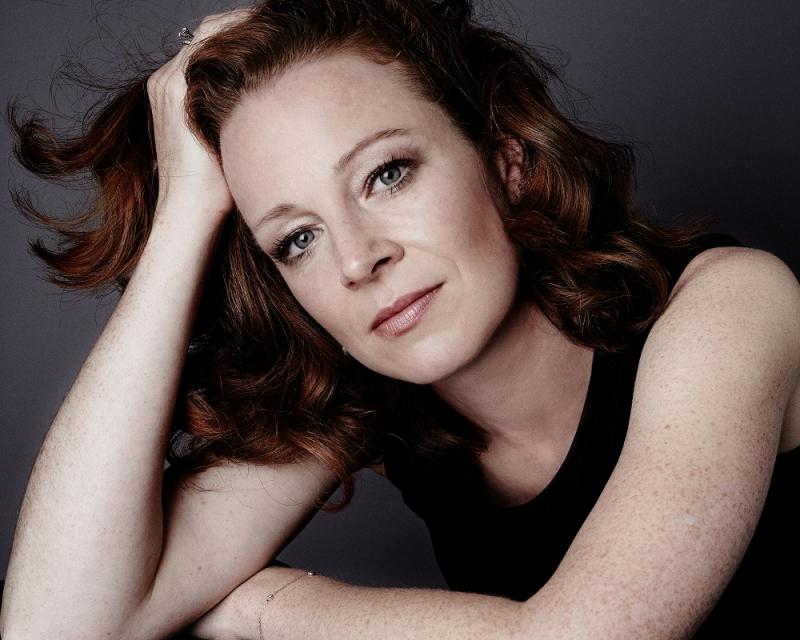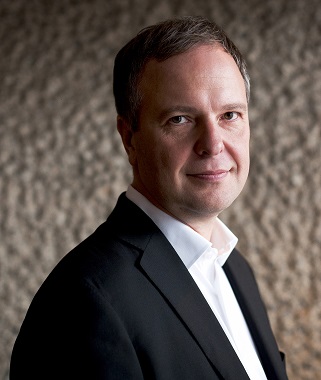Widmann, BBCSO, Oramo, Barbican | reviews, news & interviews
Widmann, BBCSO, Oramo, Barbican
Widmann, BBCSO, Oramo, Barbican
Spirited premiere for innovative new concerto

The BBC Symphony Orchestra has continued its long-standing support of British contemporary music with this première of a new commission, Michael Zev Gordon’s Violin Concerto for violinist C
Widmann’s tone, while lyrical, also has an attractive woody burr. Gordon exploited this from the start, with the opening passage performed high up on the G-string to intensity the effect. The concerto unfolds as a gradual broadening of expression, from the bold simplicity of this opening, through gradually more complex orchestral textures, although even these based on the same, simple motifs. Gordon’s focus on lyricism results in a solo line almost devoid of virtuoso effects, with no pizzicato or double-stopping until the third movement cadenza. Until then, the solo part consists of a single, continually varying melodic line. Yet there is a real feeling of substance, and nothing seems decorative.
Carolin Widmann was on the composer’s wavelength throughout
The plaintive simplicity of the first movement gives way to faster and more dynamic music in the second. Minimalism plays a role, with repeating figures in the celesta and bassoon interlocking with the solo line. In his programme note, Gordon describes these as "child-like patterns", suggesting he feels no great debt to the minimalist pioneers. And, indeed, the association is brief and the music soon moves into other areas. At the start of the third movement, the strings interpose with a loud minor triad, an effect which cleverly accentuates the wayward atonality up to this point. But this, and occasional later triads appear in isolation, like every other codified technique, tonality kept at arm’s length. Eventually, the music returns to the naive simplicity of the opening, with the concerto ending in an unadorned, lyrical coda, the appropriately prosaic performance direction: Always simple.
Carolin Widmann was on the composer’s wavelength throughout. Her ability to maintain concentration and tonal focus across long, winding lines, ranging freely across the instrument’s range, was clearly a source of inspiration, and a key to the success of this performance. The orchestra, too, gave a spirited and direct reading, no doubt aided by Gordon’s idiomatic writing.
 Sakari Oramo (pictured left, by Benjamin Ealovega) began the concert with the Overture to Kabalevsky’s opera Colas Breugnon. It’s a piece of boisterous 1930s Socialist Realism, with comic interludes and overblown climaxes. The orchestra gave a suitably upbeat account, a little rough round the edges but with enough rhythmic bite to keep the energy levels high across its short duration.
Sakari Oramo (pictured left, by Benjamin Ealovega) began the concert with the Overture to Kabalevsky’s opera Colas Breugnon. It’s a piece of boisterous 1930s Socialist Realism, with comic interludes and overblown climaxes. The orchestra gave a suitably upbeat account, a little rough round the edges but with enough rhythmic bite to keep the energy levels high across its short duration.
Shostakovich’s Tenth Symphony made up the second half, and received a committed and intense interpretation. Oramo took care not to labour the grinding, monotonous tuttis of the first movement. His opening tempo was on the fast side, although the rich lower string tone ensured plenty of atmosphere. Gorgeous clarinet solos, from Richard Hosford, brought a human dimension to the music later in the movement, and woodwind solos throughout the symphony – from bassoon, flute, cor anglais – were all ideal. Oramo is clearly happy to take the players outside their comfort zone with loud dynamics, and sometimes the tonal quality suffers, as with the strings in the second movement, and the brass in the fourth. But he also knows how to pace the build-up to those climaxes so that they achieve their full effect. And he has the measure of Shostakovich’s dark comedy, perfectly judging the contrasts between the tutti outbursts and the sardonic woodwind solos as the finale draws to a close. Not the most anguished or soul-searching of Shostakovich interpretations then, but one that addressed every facet of the composer’s complex musical personality.
- This performance BBC Radio 3 and will be broadcast on Monday 6 February
- Read more classical music reviews on theartsdesk
rating
Share this article
The future of Arts Journalism
You can stop theartsdesk.com closing!
We urgently need financing to survive. Our fundraising drive has thus far raised £49,000 but we need to reach £100,000 or we will be forced to close. Please contribute here: https://gofund.me/c3f6033d
And if you can forward this information to anyone who might assist, we’d be grateful.

Subscribe to theartsdesk.com
Thank you for continuing to read our work on theartsdesk.com. For unlimited access to every article in its entirety, including our archive of more than 15,000 pieces, we're asking for £5 per month or £40 per year. We feel it's a very good deal, and hope you do too.
To take a subscription now simply click here.
And if you're looking for that extra gift for a friend or family member, why not treat them to a theartsdesk.com gift subscription?
more Classical music
 From Historical to Hip-Hop, Classically Black Music Festival, Kings Place review - a cluster of impressive stars for the future
From quasi-Mozartian elegance to the gritty humour of a kitchen inspection
From Historical to Hip-Hop, Classically Black Music Festival, Kings Place review - a cluster of impressive stars for the future
From quasi-Mozartian elegance to the gritty humour of a kitchen inspection
 Shibe, LSO, Adès, Barbican review - gaudy and glorious new music alongside serene Sibelius
Adès’s passion makes persuasive case for the music he loves, both new and old
Shibe, LSO, Adès, Barbican review - gaudy and glorious new music alongside serene Sibelius
Adès’s passion makes persuasive case for the music he loves, both new and old
 Anja Mittermüller, Richard Fu, Wigmore Hall review - a glorious hall debut
The Austrian mezzo shines - at the age of 22
Anja Mittermüller, Richard Fu, Wigmore Hall review - a glorious hall debut
The Austrian mezzo shines - at the age of 22
 First Person: clarinettist Oliver Pashley on the new horizons of The Hermes Experiment's latest album
Compositions by members of this unusual quartet feature for the first time
First Person: clarinettist Oliver Pashley on the new horizons of The Hermes Experiment's latest album
Compositions by members of this unusual quartet feature for the first time
 Gesualdo Passione, Les Arts Florissants, Amala Dior Company, Barbican review - inspired collaboration excavates the music's humanity
At times it was like watching an anarchic religious procession
Gesualdo Passione, Les Arts Florissants, Amala Dior Company, Barbican review - inspired collaboration excavates the music's humanity
At times it was like watching an anarchic religious procession
 Classical CDs: Camels, concrete and cabaret
An influential American composer's 90th birthday box, plus British piano concertos and a father-and-son duo
Classical CDs: Camels, concrete and cabaret
An influential American composer's 90th birthday box, plus British piano concertos and a father-and-son duo
 Cockerham, Manchester Camerata, Sheen, Martin Harris Centre, Manchester review - re-enacting the dawn of modernism
Two UK premieres added to three miniatures from a seminal event of January 1914
Cockerham, Manchester Camerata, Sheen, Martin Harris Centre, Manchester review - re-enacting the dawn of modernism
Two UK premieres added to three miniatures from a seminal event of January 1914
 Kempf, Brno Philharmonic, Davies, Bridgewater Hall, Manchester review - European tradition meets American jazz
Bouncing Czechs enjoy their Gershwin and Brubeck alongside Janáček and Dvořák
Kempf, Brno Philharmonic, Davies, Bridgewater Hall, Manchester review - European tradition meets American jazz
Bouncing Czechs enjoy their Gershwin and Brubeck alongside Janáček and Dvořák
 Solomon, OAE, Butt, QEH review - daft Biblical whitewashing with great choruses
Even a top soprano and mezzo can’t make this Handel paean wholly convincing
Solomon, OAE, Butt, QEH review - daft Biblical whitewashing with great choruses
Even a top soprano and mezzo can’t make this Handel paean wholly convincing
 Two-Piano Gala, Kings Place review - shining constellations
London Piano Festival curators and illustrious friends entertain and enlighten
Two-Piano Gala, Kings Place review - shining constellations
London Piano Festival curators and illustrious friends entertain and enlighten
 Echo Vocal Ensemble, Latto, Union Chapel review - eclectic choral programme garlanded with dance
Beautiful singing at the heart of an imaginative and stylistically varied concert
Echo Vocal Ensemble, Latto, Union Chapel review - eclectic choral programme garlanded with dance
Beautiful singing at the heart of an imaginative and stylistically varied concert
 Scott, Irish Baroque Orchestra, Whelan, RIAM, Dublin review - towards a Mozart masterpiece
Characteristic joy and enlightenment from this team, but a valveless horn brings problems
Scott, Irish Baroque Orchestra, Whelan, RIAM, Dublin review - towards a Mozart masterpiece
Characteristic joy and enlightenment from this team, but a valveless horn brings problems

Add comment